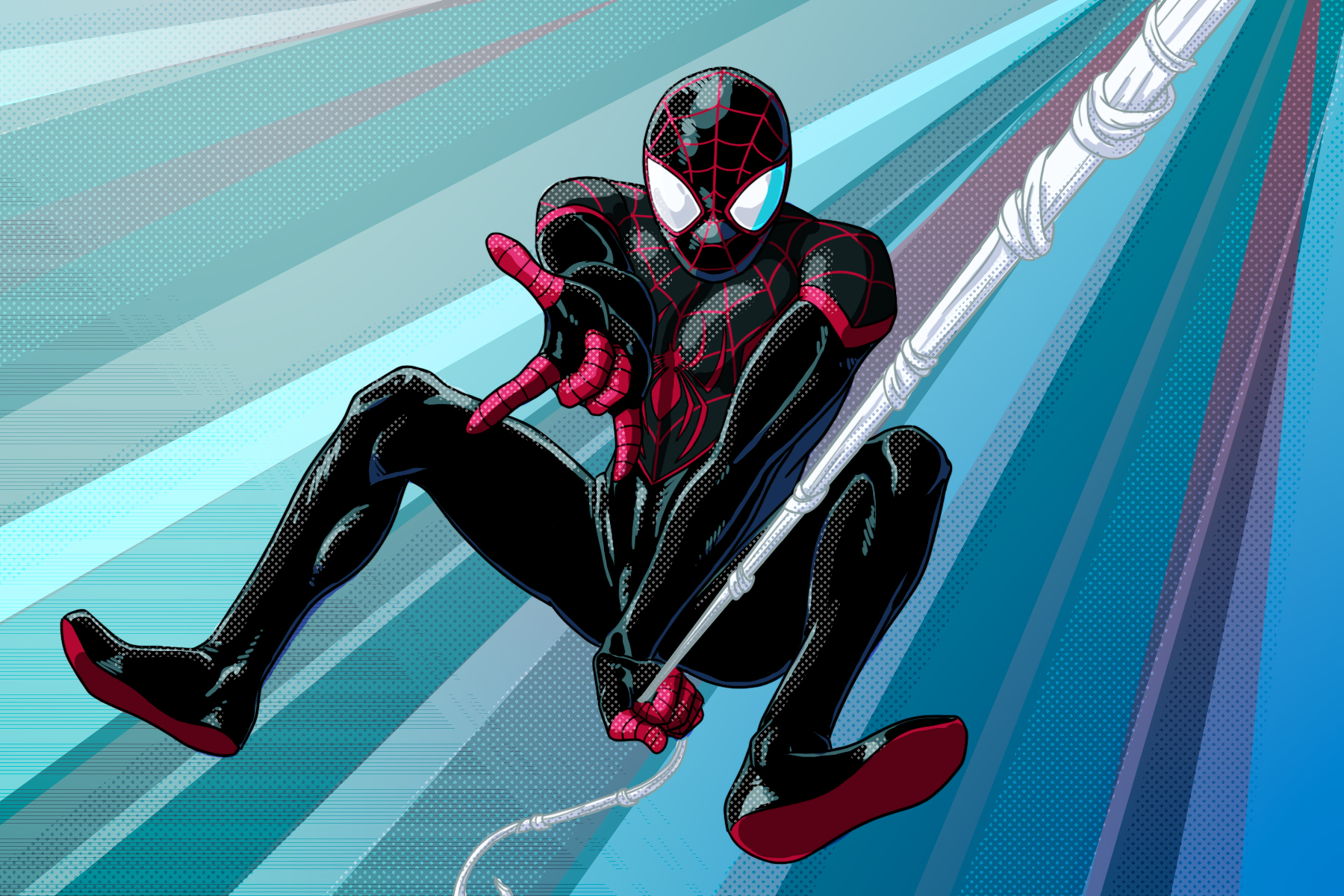Last weekend, the latest Spider-Man film left its mark on the box office, raking in a cool $35 million. Sony Pictures’ latest venture wasn’t just another tell-all about the crime-fighting adventures of Peter Parker; it has a twist — in fact multiple. “Spider-Man: Into the Spider Verse” doesn’t follow Peter Parker, but a variety of versions of him in other dimensions.
In total, there are six different versions of the arachnoid superhero. The film introduces us to Peni Parker (Kimiko Glenn), a Japanese-American girl controlling the droid, SP//dr; Spider-Man Noir (Nicholas Cage), the Peter Parker of the Great Depression and the darkest version of Spider-Man; Spider-Ham (John Mulaney), or Peter Porker, a spider-turned-pig who can’t help but crack witty jokes; Gwen Stacy, better known as Spider-Woman (Hailee Steinfeld), a heroine full of moxie and more free-spirited than the traditional Spider-Man; Peter B. Parker (Jake Johnson), who had nearly given up on life before going through the particle accelerator; and, finally, there is the main character, Miles Morales (Shameik Moore).
The film mainly focuses on Morales becoming the official Spider-Man of his universe after the Peter Parker (Chris Pine) in Morales’ dimension dies. Shortly after that happens, a particle accelerator opens the other dimensions, making all the spider-heroes come together in Morales’ universe. As the film continues, the new spider-gang try to fight the bad guys that opened the particle accelerator, the evil crime lord Kingpin (Liev Schreiber) and Doctor Octopus (Kathryn Hahn). The spider-heroes all work together to defeat the evil duo and try to find their way back home to their respective universes.
The underlying plot of “Spider-Man: Into the Spider Verse” might seem basic — a team of good guys try to fight the bad guy — but the quality of production and character development make it a story worth watching.
For some, the animation style might have been too complex or fast-paced, but that’s what added to the action of the movie. In addition, the film includes images and dialogue (which at times is actually transposed onto the screen like word art) from the actual comics, at times even featuring the original source material on-screen. A mix of hand-drawn figures and computer-generated animation make the multiple universes more believable, as switching between second and third dimension helped bring the characters to life and made you feel immersed in the different worlds.
Just as the unique animation helped the film stand out visually, the relatability of the characters made the protagonists easy to root for. In doing so, they movie skirts one of the many challenges of creating a good superhero story: How can characters with extraordinary abilities seem like normal people? Emotion is the answer to that question, but very few films make the audience sympathize with the heroes.
With Morales, his family is still alive, which changes the dynamic; he has people he needs to return to at the end of the day: his father, Jefferson Davis (Brian Tyree Henry), a cop for PDNY, and his mother, Rio Morales (Luna Lauren Velez), a nurse. Morales is just a 13-year-old kid from Brooklyn who loves music and wants to do street art with his uncle Aaron (Mahershala Ali). Morales’ narrative is established right from the start and continues to build the idea of family throughout the film.
In addition to his family, Morales finds a mentor figure in Peter B. who, after landing in Morales’ dimension, finds himself helping the budding superhero discover his abilities and purpose. By the end of the film and after mentoring Morales, Peter B. is more confident when he returns to his universe, and even tries to patch things up with his ex-wife, Mary Jane (Zoë Kravitz).
Likewise, the other spider-characters all undergo some version of personal growth. Spider-Woman softens up a little bit, while Peni finally feels excited to return home. Spider-Man Noir finds himself adding a little color to his life, and Spider-Ham enjoys a tasty treat of another kind.
In retrospect, “Spider-Man: Into the Spider Verse” isn’t the typical Marvel film. It’s unique with its delivery and introduces new characters that have only been heard in the comics. For an MCU film done by Sony Pictures, this film pretty much nailed it. Compared to “Venom” and “The Amazing Spider-Man” series, “Spider-Man: Into the Spider Verse” is the multiplex story that Sony needed to save them.
















